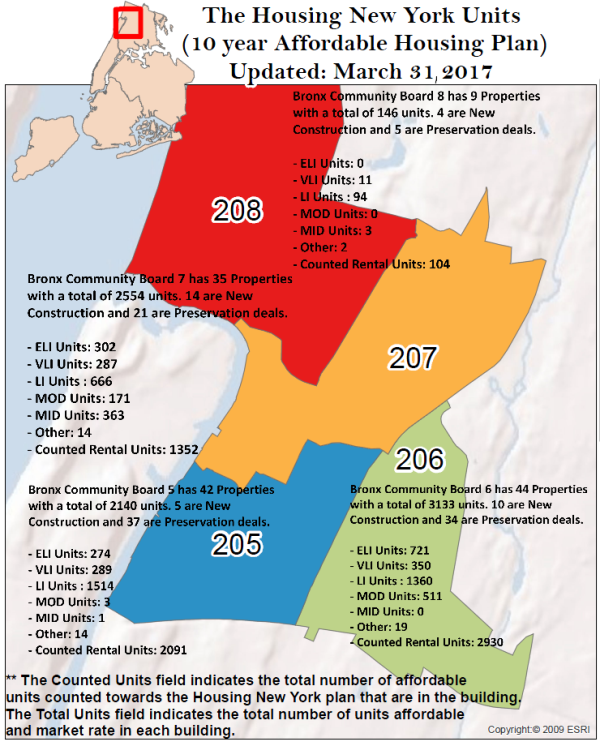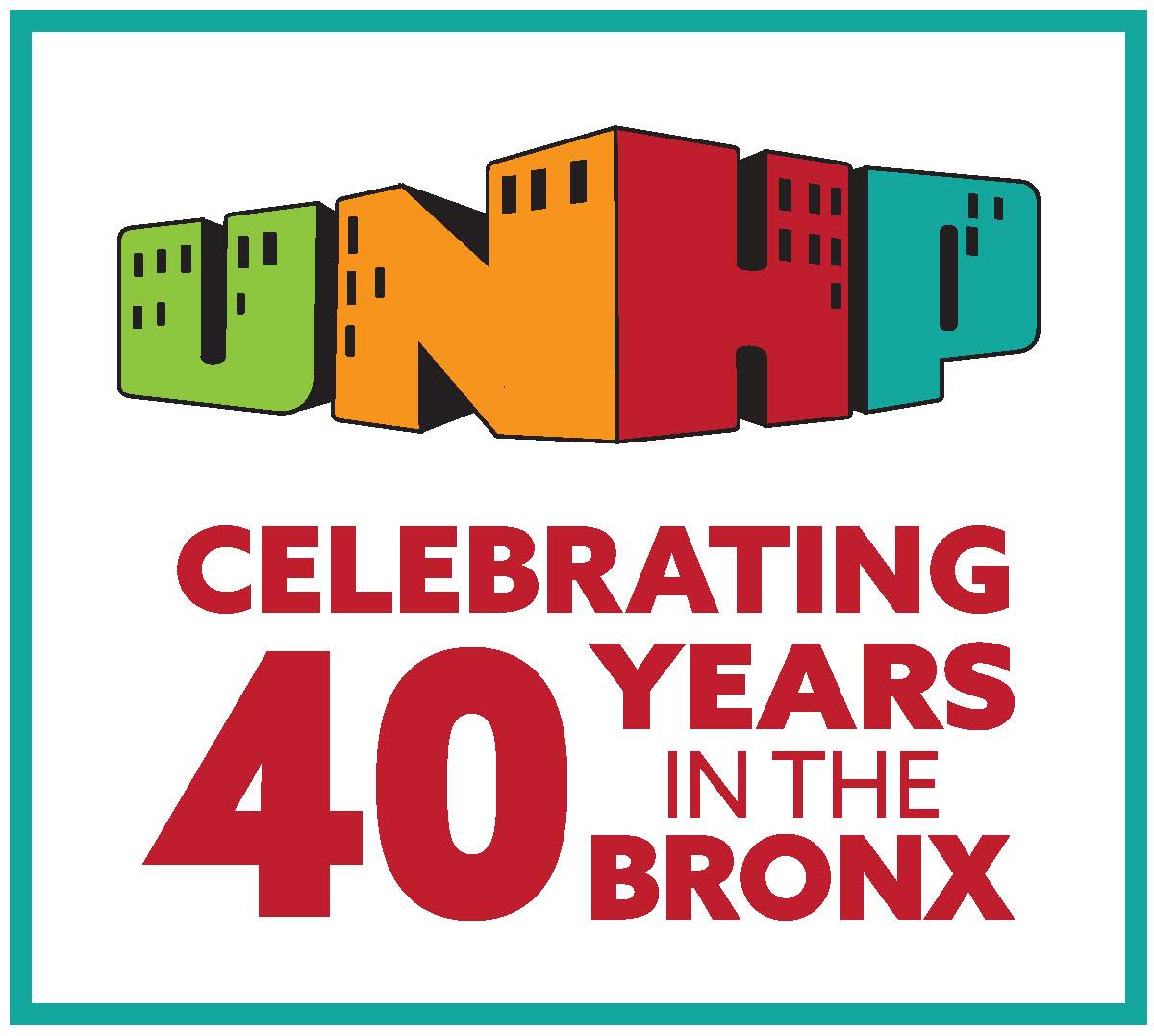Is the Bronx Building? Look for Yourself // Views from the Northwest Bronx
This post is part of a series aimed at framing an inclusive and informed discussion on issues affecting the affordability and viability of Northwest Bronx neighborhoods today. We invite you to share these posts—available on our website—widely, and join the conversation by sending us an email, reaching out via Twitter, or connecting with us on Facebook. Use #ViewsNWBX to let us know you’re interested!
The Bronx is under construction: cranes, excavators, scaffolding, and green demolition fences are everywhere. The New York Times highlighted the boom in the South Bronx and while Bronx Borough President Ruben Diaz Jr. sees the future as very bright, he also argues for the preservation of housing alongside new development. Jude Kende, Vice President and New York Market Leader for Enterprise Community Partners, wrote in this blog series that, “In the last several years, much of New York City has seen unprecedented development activity.” For long-time community staffers and residents in the northwest Bronx, the building and demolition we see as we walk to work, lunch, or the train is unprecedented.
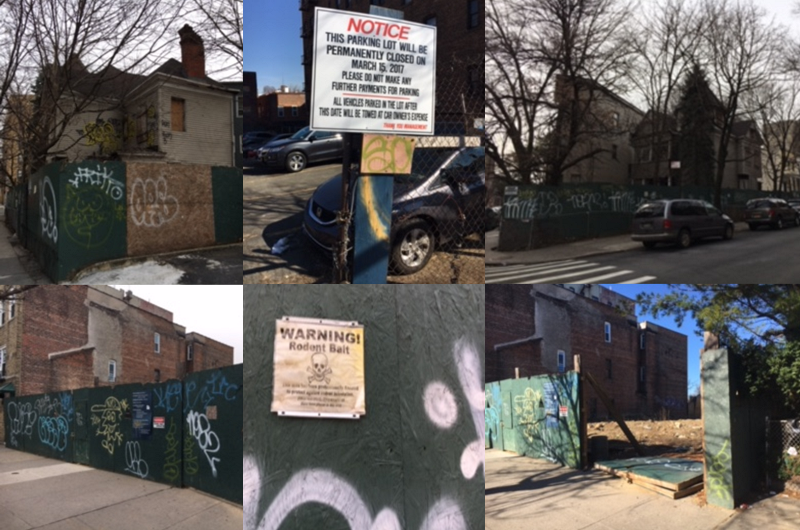
What we do know is that the northwest Bronx, like the South Bronx, is changing rapidly. 1- to 4-family homes are being demolished, new neighborhoods are being created, and old neighborhoods are being expanded. Bedford Park, a mixed density community, is being built up and 10- to 12-story multifamily buildings are being squeezed in next to existing 7-story buildings.
What follows are photos taken of some of the demolition, in-construction developments, and planned construction in about a 10-block radius from our offices located at East 196th Street and the Grand Concourse at Concourse House. Most of the photos are in Community Board 7 from Jerome Avenue to Webster Avenue, while five developments are north of Gun Hill Road on Webster Avenue in Community Board 12.
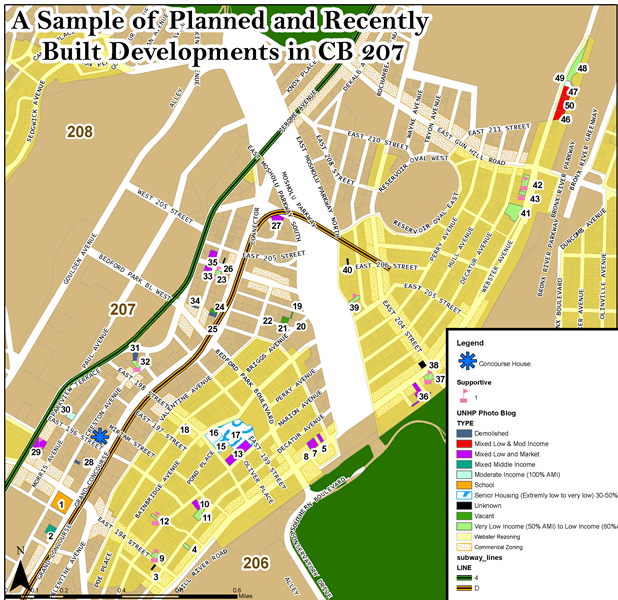
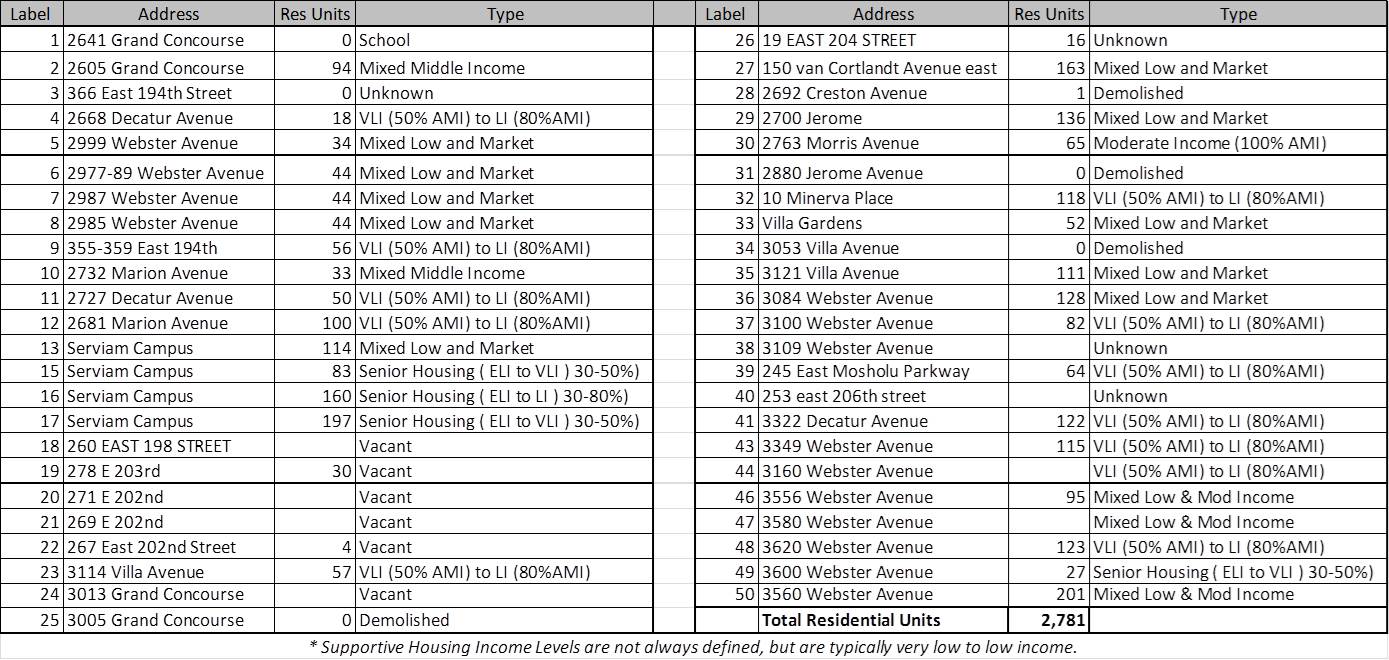
Throughout, the text references the affordability of units if known. The basis for affordability is the Area Median Income or AMI. The AMI is the combined average household income for the entire NYC metropolitan area, including all five boroughs, along with surrounding counties like Westchester, Putnam, Fairfield, and Rockland. The NYC metropolitan area AMI for 2017, determined by HUD, for a household of four is $95,400. Affordability is calculated as a percentage of AMI. Housing is considered affordable when a household spends no more than 30% of its income on rent.
It is important to note that AMI is very different from the median income in a borough or neighborhood. According to U.S. Census data, the actual median income for a 4-person household in the Bronx is $44,128. The median household income in Bronx Community Board 7 is $35,540. On the AMI sheet, a family of four earning $44,128 would be classified as low-income at 60 percent of AMI and a household of four earning $35,540 would be categorized as very low income.
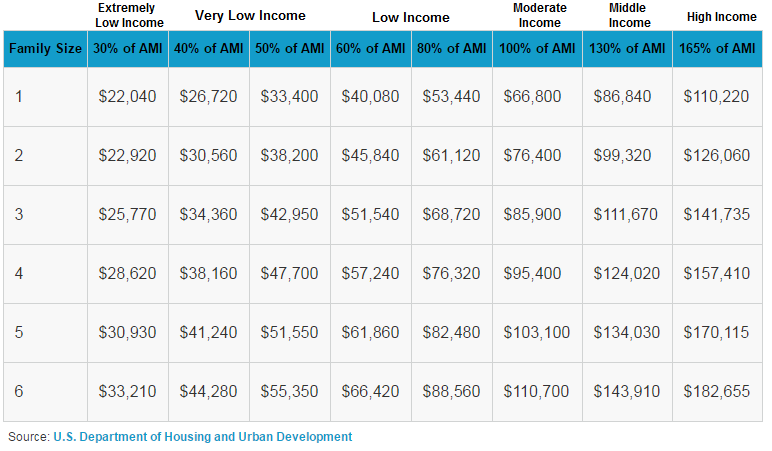
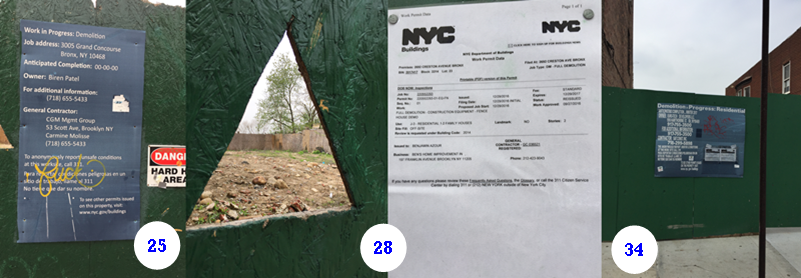
While multifamily buildings dominate our northwest Bronx community, 1- to 4-family homes are scattered among the apartment buildings. Many of these homes are being demolished. Demolition permit signs, but not the reconstruction plans, are posted on the green privacy fences.
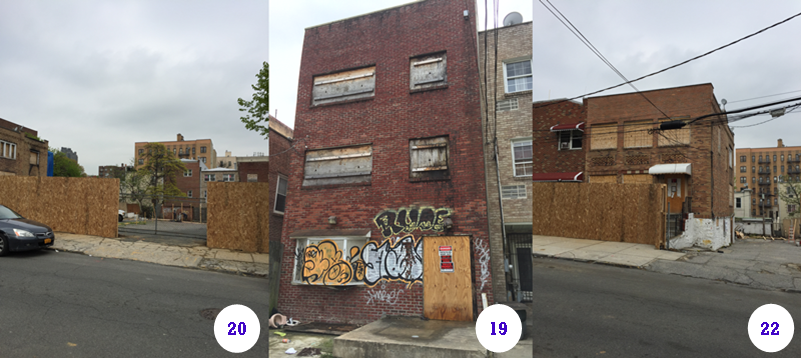
The neighborhood of Bedford Park in Community Board 7 has a mix of multifamily buildings and 1- to 4-family homes on its narrow tree-lined streets. 19: The possible development of a recently burnt out six-unit home—where tenants were suing the landlord—and other adjacent vacant properties has alarmed neighborhood residents. The neighborhood is fighting to down-zone the community, but the density and character of the community may have already changed significantly.
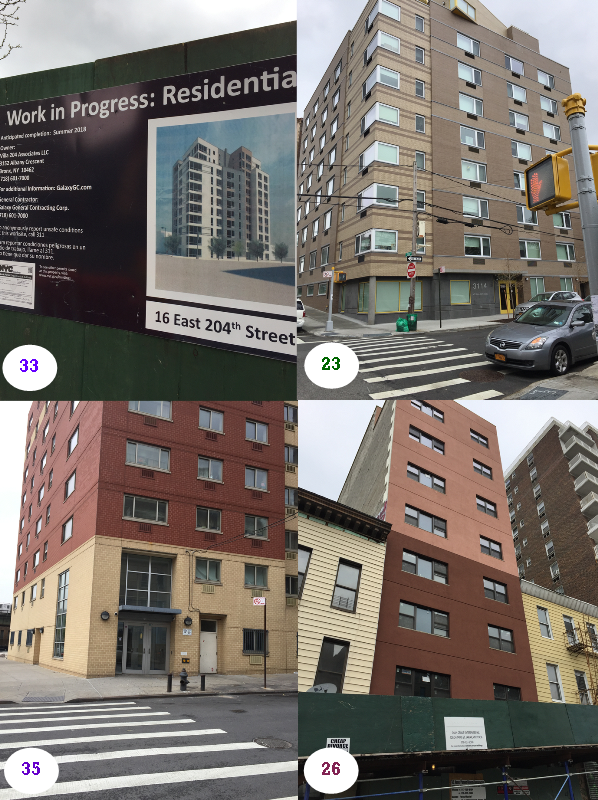
33: Villa Gardens, the planned construction by developer Steve Zervoudis, financed with an affordable housing loan from Chase Community Development, will result in a 12-story, 52-unit affordable housing rental building. The site, formerly a parking/storage lot, will provide 13 units at 60 percent of AMI, 14 units at 80 percent of AMI and 25 units at market rents. There will be a preference for residents from Community Board 7 for the 27 lottery units. 35: 3121 Villa Avenue was developed in 2007 by Peter Fine of Atlantic Development LLC and provides 110 rental units, with some portion set aside for households earning less than 60 percent of AMI. 23: Across the street, 3114 Villa Avenue provides 56 units of supportive housing through Project Renewal’s Homes Now Initiative. It was opposed by Community Board 7 in 2012 and developed on vacant land. 26: 19 East 204th Street is in an 8-story development with ground floor commercial on a site formerly occupied by a 1- to 4-family home. Fatos Mustaf is the owner and no rental details could be found.
Residents in these buildings have convenient access to the D or 4 trains and may create new business for the commercial stores on nearby Bedford Park Blvd. These developments have expanded the neighborhood of Bedford Park on its western boundary closer to Jerome Avenue.
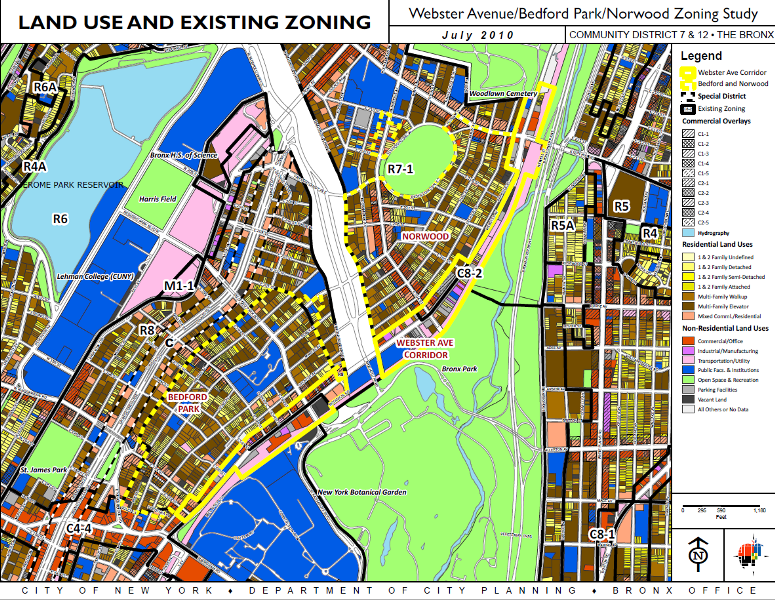
The Webster Avenue Rezoning plan was approved by the NYC Council and initiated by Community Board 7 and the Four Bronx Institution Alliance, comprised of Montefiore Medical Center, the New York Botanical Garden, the Bronx Zoo, and Fordham University. The rezoning has spurred significant residential development along this corridor. The Metro North train runs along Webster Avenue and, along with Fordham University and the Botanical Garden, is a natural boundary for neighborhoods. The rezoning has encouraged development along the boundaries of Norwood and Bedford Park. Completed and new developments along Webster Avenue at the borders of both Norwood and Bedford Park are increasing the population and expanding the neighborhoods.
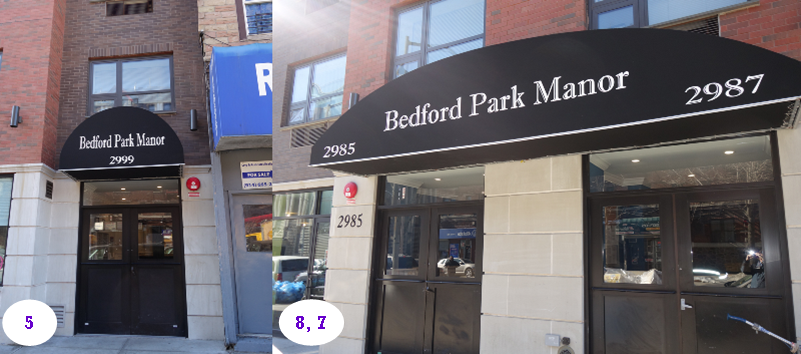
The first new developments after the rezoning were developed by the Stagg Group. 5, 7, and 8: The Bedford Park Manor development consists of 3 buildings with 122 units. The development was originally marketed with 25 affordable units and 97 market-rate units affordable to families annually earning between $50,000 and $70,000, but neighborhood residents have raised questions about the renting of the market-rate units. Stagg Group is also the developer of 2346 Prospect Avenue in Belmont. Those units were originally marketed as mixed affordable; the development is now touted as the first of the 90 homeless shelters to be built under the Mayor’s plan. This change raises questions about what developers are doing if the market rents cannot be achieved; are they turning to the higher public program subsidies to support the project?
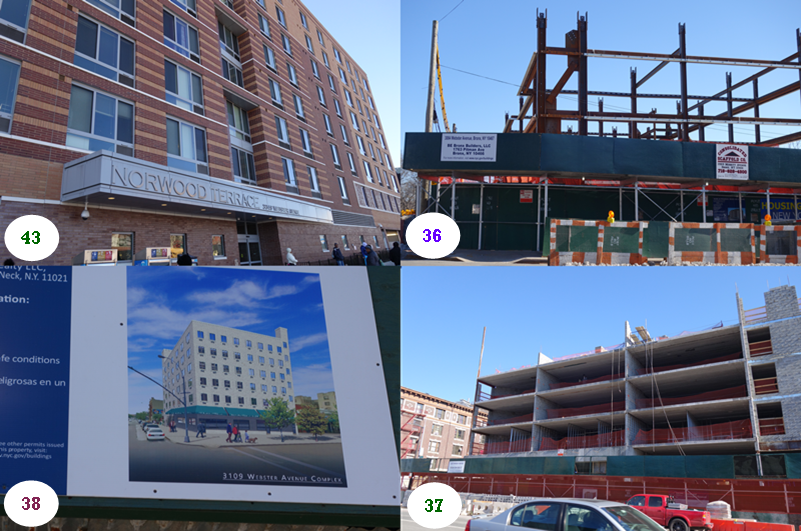
Pictured above are recent residential and mixed-use developments in Norwood. 43: Norwood Terrace is a completed development with 58 supportive housing units and 57 units for low-income individuals and families. 36: Another Stagg Development is in-construction at 3084 Webster Avenue and will offer 4,000 square feet of retail and 128 housing units at 20 percent affordable and 80 percent market rate. 38: 3103-09 Webster Avenue is pictured as a 6-story residential development with retail on the first floor. Further details could not be found. 37: Webster Green, in-construction by the DOE Fund, is an 82-unit supportive (41 units) and affordable housing (41 units at 60 percent of AMI) development with administrative and management offices on the ground floor accompanied by a laundry room, community space, open space, playgrounds, unique landscaping, and green features. The hundreds of new households living in these completed and planned developments around 204th Street and Webster Avenue may boost the commercial strip at 204th Street and Bainbridge Avenue.
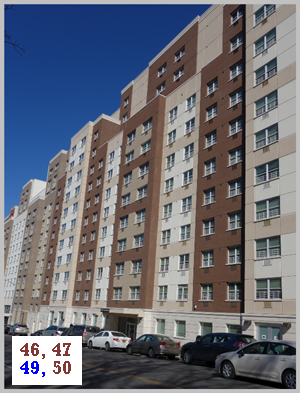
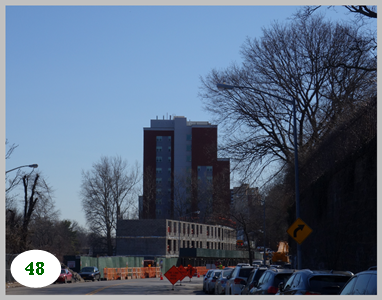
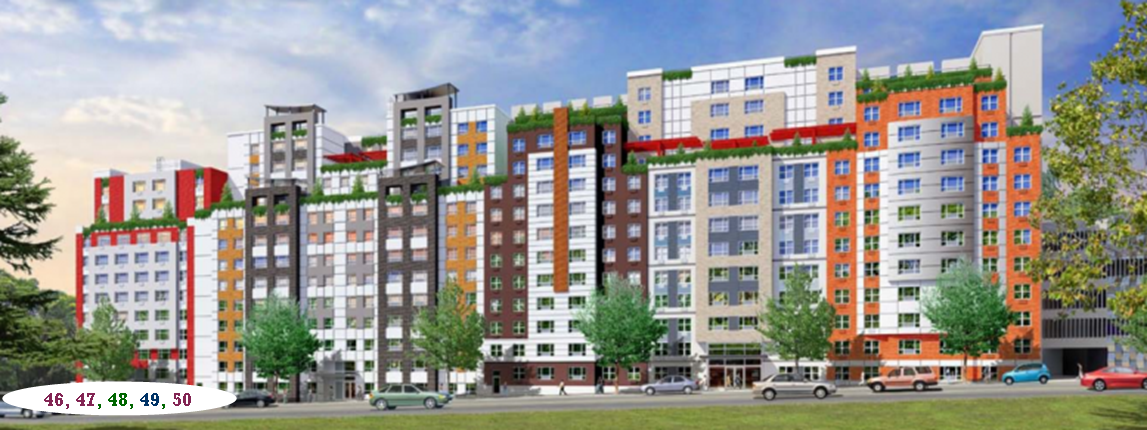
The rezoning has also spurred development north of Gun Hill Road, a lightly populated area in Community Board 12 (Woodlawn) that is outside any definable neighborhood. This development, built on a Woodlawn Cemetery storage lot, backs onto the Metro North tracks and is across from a high stone wall surrounding the Woodlawn Cemetery. 46-50: The entire complex, known as Webster Commons, is a mixed low- and moderate-income development by Joy Construction built with public financing. Shopping and subway transportation are not located nearby. There are five buildings in the development with four completed and one in-construction. 49: One of the buildings, 3600 Webster Avenue, offers apartments for low-income seniors. There are 484 units in the five buildings serving a mix of low-, very low- and moderate-income families and individuals with rents ranging from $540 for a senior one-bedroom apartment to $1,692 for a three-bedroom unit. Webster Commons won Project of the Year from NYSAFAH.
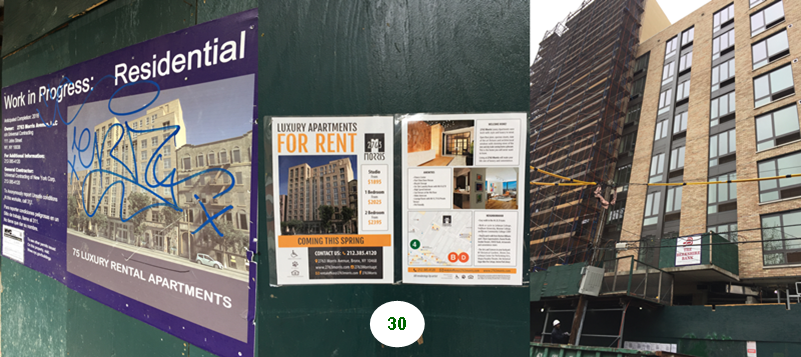
30: Marketed as luxury rentals, 2763 Morris Avenue is actually funded in part through the NYC Housing Development Corporation (HDC) Low-Income Affordable Marketplace Program (LAMP) and its 67 rentals are affordable to moderate-income families and individuals earning between 90 percent and 120 percent of AMI; about $85,900 for a family of four or $76,400 for a household of two. Rents are $1,850 for a studio, $2,025 for a one-bedroom, and $2,395 for a two-bedroom. It is conveniently located near the 4 and D trains and offers a fitness center and part-time doorman. This apartment building, also financed by Berkshire Bank, is located on a busy block next to private homes and 7-story privately owned apartment buildings. The median household income for Community Board 7 Bronx residents is $35,540 and the median rent for recent movers into the community is $1,777. (2017 State of NYC Neighborhoods/Furman Center)
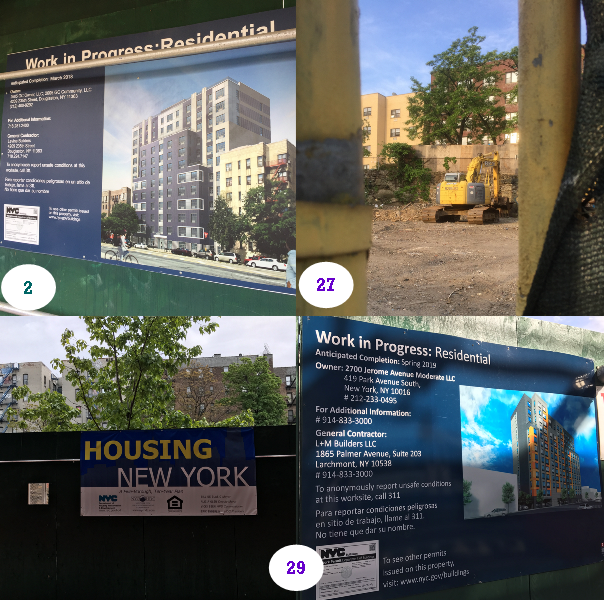
Housing New York is signage that indicates this development is part of Mayor de Blasio’s 5-borough, ten-year housing plan. 29: 2700 Jerome Avenue, a large planned development by L+M Developers and others, is a short walk away from the 4 train and Kingsbridge Road commercial strip. The 13-story building will include 136 below-market apartments. According to the developers, 40 units will be set aside for formerly homeless families and the remaining apartments are set to go to low- and middle-income households. Nonprofit Center for Urban Community Services will manage the building. 2: Towering over the 7-story multifamily buildings on the Grand Concourse, 2605 Grand Concourse is a mixed middle-income 12-story multifamily building with 94 rental units and 15 parking spaces. 23 units are set at or below 60 percent AMI, 28 units at between 80 and 100 percent AMI, and no more than 42 units at 100 to 165 percent AMI. 27: Mark Stagg and The Stagg Group continue to be active in the northwest Bronx with a planned large development on the corner of the Grand Concourse and Van Cortlandt Park East. 150 Van Cortlandt Avenue East is a large vacant lot and plans have been filed for a 13-story, 163-unit rental development.
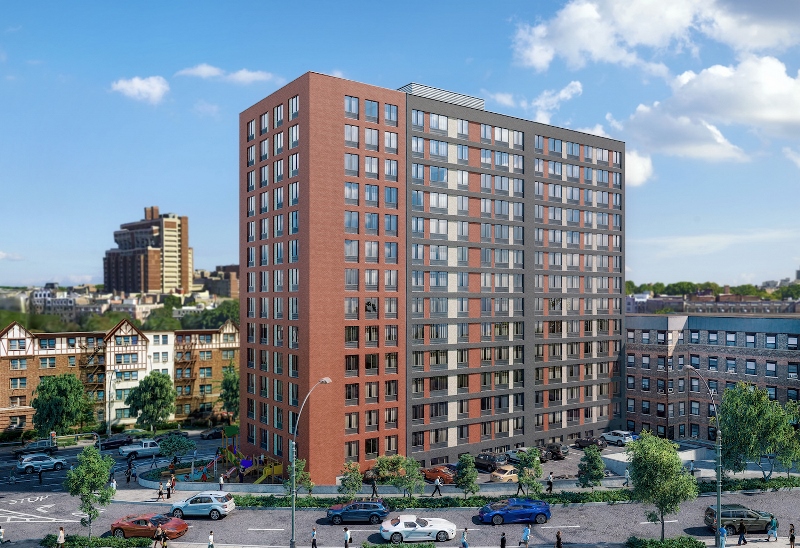
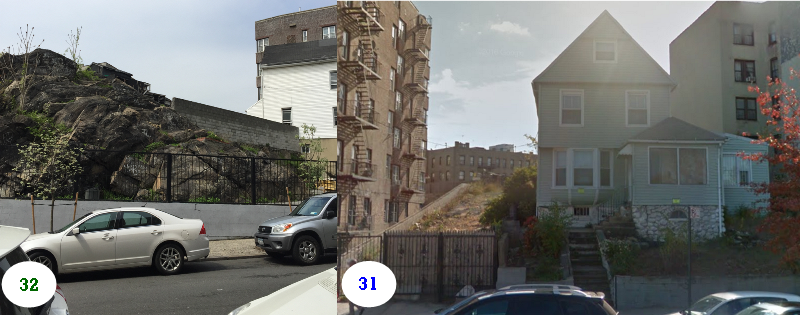
New York City created about 2,500 supportive housing units in the Bronx from 2005 to 2014. Supportive housing provides permanent housing and services to the homeless, recovering addicts, the mentally disabled, and others who need help living independently; this population is also typically very low-income and relies on some type of public assistance for support. NYS Housing and Community Renewal (HCR) received an increase in funding in 2017 for supportive housing. 31 and 32: Project Renewal has plans to build a 12 and a 14 story supportive and affordable housing project for 213 households. Overall, a total of 213 units will be built with supportive and affordable units intermingled into each property; Building One will house 132 units, 71 of which are supportive with 61 affordable while Building Two will hold 81 units–49 supportive and 32 affordable. On the affordable housing side, developers are looking for renters who make from $18,150 for individual tenants to a maximum $51,780 in combined income for a family of four. The buildings are to be squeezed in to two densely built blocks on Creston and Minerva Place and frontage on Jerome Avenue as well.
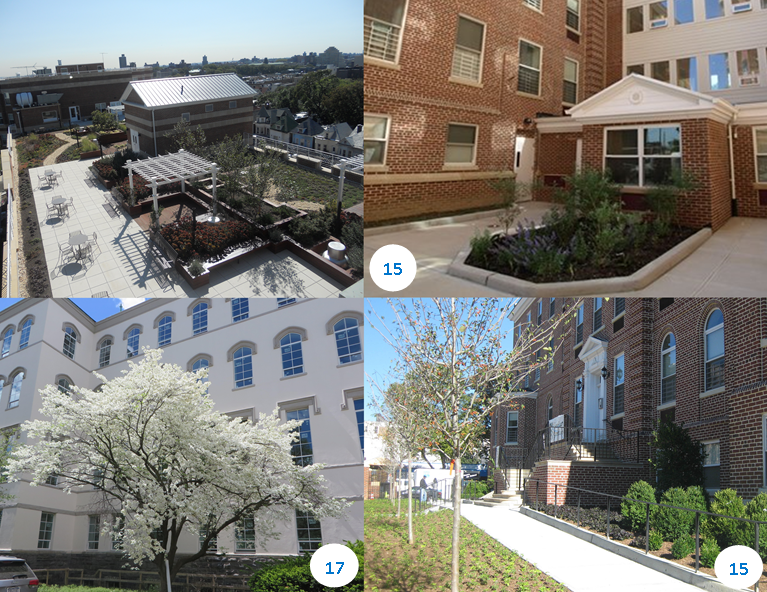
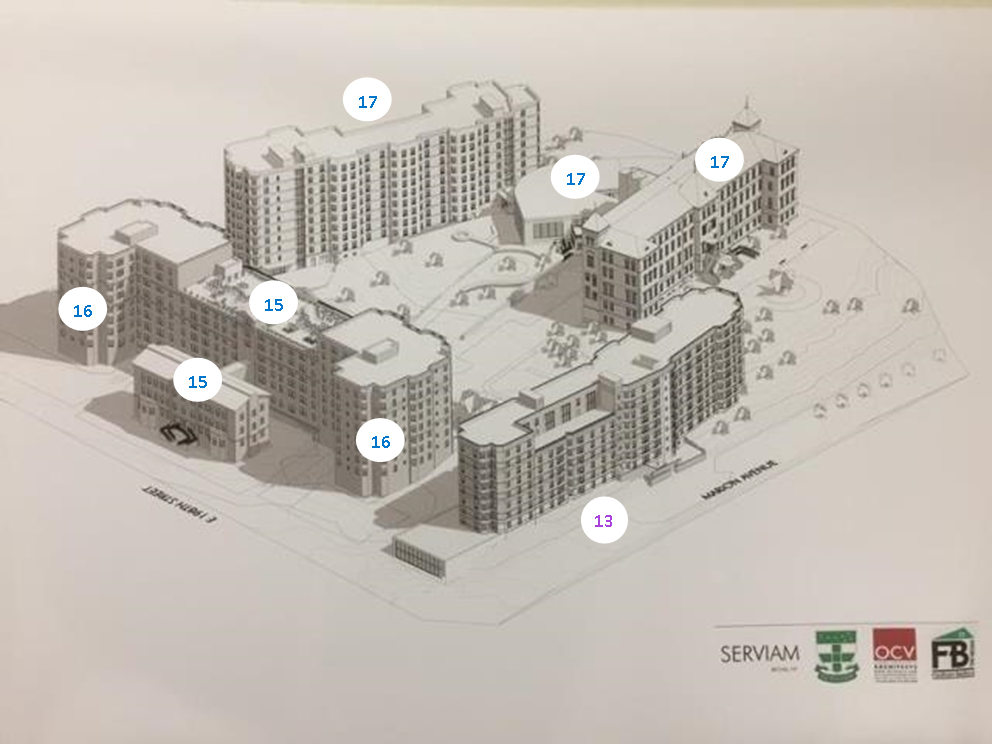
A long-time community relationship between Fordham Bedford Housing Corporation (FBHC) and the Ursuline Sisters has been instrumental in the construction and planned construction of five affordable housing developments created on what is being called The Serviam Campus on 198th Street off Bainbridge Avenue. Serviam, “I Will Serve…” in Latin, is the motto of the Ursuline Sisters and a key component in the mission of Fordham Bedford, a community-based housing organization. The Serviam Campus includes the Academy of Mount St. Ursula, a Catholic, college preparatory high school for girls, founded over 160 years ago. 15 and 16: The first three senior buildings, Serviam Gardens and Towers, opened their doors in 2009 and 2010 and provide affordable housing for 243 senior households. Two additional projects are currently planned; 17: Serviam Heights is in-construction on the Bainbridge Avenue side of the block and 13: The Bronxview at Serviam is planned for the Marion Avenue side. Serviam Heights includes a renovation of the former Ursuline Bedford Park Convent together with a new building which will, combined, provide an additional 197 units of affordable housing for low income seniors. The Ursuline Chapel will be converted to provide a 17:Community Life Center for all of the seniors living in the Serviam buildings. The planned Bronxview building will create 114 new affordable apartments for low and moderate income families. All of the Serviam buildings meet Enterprise Green Communities requirements and include features such as a usable green roof, landscaped open space and community gardens, a wellness center, a wide range of services and activities, and energy efficient lighting, heating, and cooling systems.
—-
It is clear that the northwest Bronx is building; but it’s not so simple to ascertain what exactly is being built. The properties identified here are just a sample of the many developments—consisting of thousands of new units—in Community Board 7, representing those we see as we travel in and around the neighborhood. It should not be so difficult to look at a neighborhood and develop an understanding of the physical changes that are occurring. The information presented here draws from myriad sources. There are maps and data available from HPD, HDC, DOB, the NY Acquisition Fund, the Furman Center, NYC Tax, and Open Data; not one of them offers a complete picture. Without transparent, accessible, and timely data it is nearly impossible to adequately involve a community in its own development and meet anything resembling the Fair Share criteria.Thousands of units are being built and an equal amount of households will become part of our community. More proactive sharing of information and increased coordination between public, private, and nonprofit organizations is necessary to ensure the rapid development of the Bronx is informed by and represents the interests of the communities in which it is occurring.
